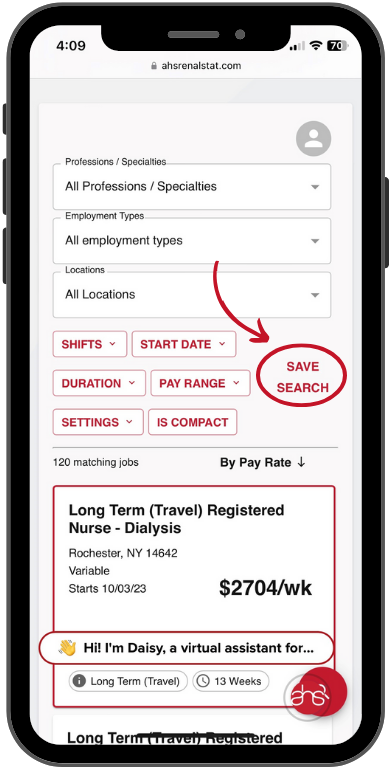RV CARE is a program that focuses on the decrease in mortality, improvement of outcomes in patients with end-stage renal disease (ESRD), and helps patients adjust to dialysis by empowering them to take care of themselves and be advocates in their own health care.
The program is based on the RightStart Program that Dr. Raymond Hakim, of Fresenius Medical Care, implemented. Almost three years ago, Tom Parker, MD, chief medical officer of Renal Ventures Management, started brainstorming how to apply a program like RightStart in his facilities, but with his own twist.
“Dr. Parker stated that it would be beneficial if we had a person dedicated to the program,” said Naveena Reddy, lead care partner for RV CARE.
Reddy was hired to start the program when it was nothing more than a concept in their heads.
“When I started with Renal Ventures, along with the RV CARE director, we developed the materials, designed the program and implemented the program,” she said. “After we got the program started, we gave it six months to see where it would take us. It did get the results we expected, better than we expected.”
How it Works
The first 120 days after the patient gets diagnosed with ESRD are the most crucial. Infections, adjustment issues, cardiac problems and fluid management are major problems. There is also a high risk of mortality.
“You go from being fairly independent to having to relying on dialysis. In-center hemodialyisis (HD) is a therapy that is scheduled three times a week, with each treatment taking four to five hours. Peritoneal dialysis (PD) is done at work or home. Patients have to take time several times a day to perform ‘exchanges.’ Each exchange takes approximately 20 minutes,” said Laura Schmidt, director of education for RV CARE. “It’s a major adjustment, not only in your lifestyle, but financially as well.”
When a patient is new to a Renal Ventures clinic, the care partner is notified and within the first week the patient and care partner meet. The introductions are made and the four month program is offered to the new patient.
“It’s all about building a rapport with a patient,” Reddy said. “The care partner will review the chart and interview to try and understand where the patient is with their health. After talking to the patient, we try to see where the patient’s understanding is about kidney disease.”
Based on those two information pieces, the care partner sets goals that the patient tries to reach. First, they focus on what is needed right away, and then go down the list. Patients have the freedom to decline this program if they feel that they have the support and the ability to handle themselves.
“Depending on where the patient is and the intensity of the program, the care partner follows up with the patient weekly, or bi-weekly, or even twice a week,” Reddy said. “Every time the care partner meets with a patient she goes over one component at a time until the patient fully understands it and has met the goal of one. Then they move onto the second one.”
There are seven components that the care partner focuses on. If after the program the goal or component has not been reached, each patient graduates from the program and the staff at the clinic takes over at that point. Currently, there are four care partners across the country at Renal Ventures: three dietitians and one social worker.
“We have about 35 clinics,” Reddy said. “We have one care partner per region. Region meaning that we bundled a few clinics—north New Jersey region, south Jersey region, Dallas region and the Beaumont region. Each care partner usually has about 50 patients at any given time.”
Beaumont, Texas was the last area the program was implemented in, and it currently is in all of the clinics. “With any of the acquisitions, we intend to introduce the RV CARE program into those as well,” Schmidt said.
What if RV CARE Doesn’t Exist?
Programs like RV CARE are great for those patients who have access to them, but what about the ones that don’t in states across the U.S.?
Schmidt suggests a permanent vascular access should be the first step in order to prevent infections. “A catheter is probably the number one factor to infections and hospitalizations,” she said.
Working with the dialysis staff to monitor fluid management and diet, and keeping track of the patient’s scheduled treatments is also important.
“RV CARE staff do a lot of counseling when it comes to adjusting to dialysis care,” Schmidt said. “They also work very individually with them on their nutrition and fluid status and answer any questions they may have about their treatment, because fear is another thing that they deal with.”
Patients should always ask questions when they have them, and staff should focus on ways to better the quality of their patients’ lives.
Future Goals
RV CARE continues to strive to improve patient outcomes even more than they have since the start of the program. They want to educate patients, even before the start of dialysis.
“Right now, we are piloting RV CARE CKD Education Program in the Dallas area,” Reddy said. “Our goal is to start education on most of our incident patients prior to the start of dialysis to impact the outcomes at the initiation of dialysis. If there is somebody who might benefit from home dialysis—instead of starting them on in-center, we want to transition them directly to a home modality.”
Patient care, especially with ESRD patients, is important and improving their overall well-being should be a priority. ~RenalBusinessToday.com ~


